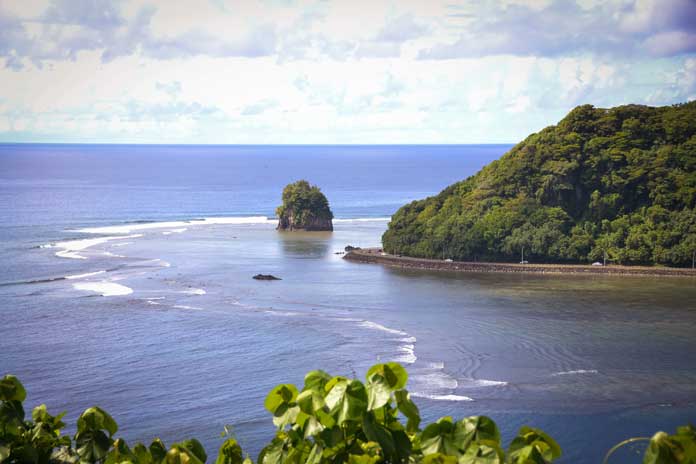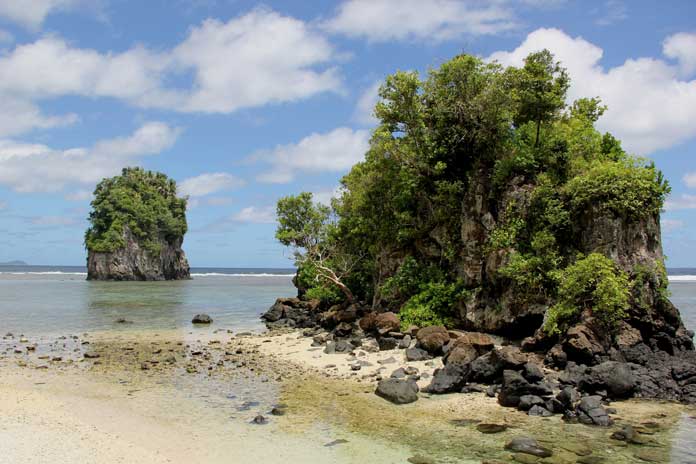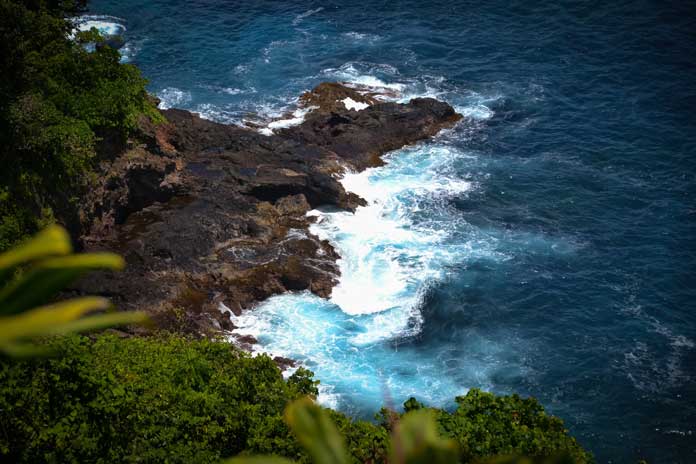The National Park of American Samoa is composed of three different islands called Tutuila, Ofu and Ta’u. The park designation protects the islands, reefs, tropical rainforests, mountains, volcanoes and ocean. The islands are found in the south Pacific, east of Australia if you’re looking at a map.
Table of Contents
Why is American Samoa for the United States?
The national park system preserves and protects the best lands, waters, cultural heritage and ecosystems in the nation and the United States Territory of American Samoa; there are remarkable rainforests, island scenery and coral reef systems that need to be preserved and protected. These islands have what are considered some of the finest examples of rainforests and reefs and the national park system was extended to help protect and preserve these. The lands are not owned but leased by the United States Government, allowing the Samoan people who reside there to live and continue with their unchanged traditions and way of life while protecting their lands and waters.

What is the National Park of American Samoa like?
The remote islands in the South Pacific are susceptible to long wet season and storms from October to May. The drier and colder months are from June to September. The main things you need on your visit are insect repellant and lots of sunscreens. The solar radiation is intense on the islands and sunburns can happen quickly. Always carry some water with you and if you’re walking along the beach, watch for falling coconuts! The weather is humid and tropical, and it rains year-round. The temperatures range from 70 degrees Fahrenheit into the 90s. The islands have fruit-bearing trees as well as forest birds, bats, corals, fish, insects, whales and many more species of both marine life and mammals and reptiles. Be prepared for a beautiful and remote visit to a remote island in the middle of the ocean.
What is there to do?
There are indoor and outdoor activities to do in the National Park of American Samoa. The outdoor activities, of course, offer more as the park is on an island with amazing outdoor things to see and do. Snorkeling and diving are among the most popular outdoor activities to do. There are no gear rentals available, so you must bring your snorkels and dive gear. The best snorkeling is off the coast of Ofu, but getting there can be complicated. To get to Ofu, you must fly to Ta’u and then hire a fisher to take you across to Ofu in a boat.
Other activities include beach walking and hiking. Hikes include those along the beach, up steep inclines to vistas and through tropical rainforests. The island of Tutuila has the most trails, about 10 of them, while the smaller islands have a couple to experience. Different varieties and difficulty levels are available for a wonderful experience on a tropical island. Keep in mind that the trails are rugged and much more primitive than most other national parks.

Indoor activities include a stop at the new visitor center that replaced the center that was destroyed by a tsunami in 2009. The visitor center is a good place to see first. Here, you can get hiking maps, information on the area, transportation questions, answered, see the amazing exhibits and learn about the American Samoa and the islands. See and learn about the cultural and natural wonders the National Park of American Samoa protects there on the islands.
What are the local customs to be aware of?
The Samoan people have maintained their way of life and customs as well as traditions for thousands of years. These have gone relatively unchanged, and people are visiting should be aware of how to be respectful on the islands these people call their home. Always ask villagers for permission before taking photographs, using the beaches, or anything else. Approval is almost always given, but it is respectful to ask. Do not eat or drink while walking through a village.
When entering a traditional home, sit on the floor before speaking, drinking, or eating. Make sure your legs are crossed and covered, as stretching out your bare legs is considered rude. The Samoan are humble people. Attempt to keep your legs and shoulders covered and use covers over your swimwear. Sundays are regarded as days of rest on the islands and activity is limited. Swimming may not be allowed to keep this in mind if you are visiting on a Sunday.
Watch Your Step
This small and remote park lacks a search and rescue operation. If you get lost or injured on the outlying islands, chances are there is no one to help find you or get you out of a particular area. Use extreme caution, as the nearest United States Coast Guard vessel is located thousands of miles away in Honolulu. Safety is the primary concern, so hike with caution and let people and the park staff know where you are going and when you are expected to return. Medical assistance and treatment are available on the island of Tutuila.
Immigration and Customs Requirements
The islands and the National Park of American Samoa are considered international travel so that you will need a valid passport. Visitors will have to go through immigration and customs due to the international travel designation. Visa entry is required for passport holders except for citizens of the U.S., Canada, New Zealand, Australia and the United Kingdom. The only airline carrier to Pago Pago on Tutuila Island is currently Hawaiian Airlines. They send two flights per week from Honolulu. Inter-island flights are available to island-hop, or local boats can be taken. The larger island of Tutuila has taxis and rental cars available.

Where Can I Stay?
Camping is not allowed in the National Park of American Samoa due to the precious resource there and lack of emergency response difficulties. However, lodging can be found on all the islands except Olosega. On Ta’u, homestay lodging is the only lodging available. Visitors should know that there are no restaurants on the outer islands, just a few small convenience stores. Tutuila is the most significant island, and it offers plenty of restaurants with options ranging from fast-food to excellent restaurants and a bit more civilization to be provided.
One of a Kind
The National Park of the American Samoa is genuinely a one-of-a-kind park. The islands are mostly untouched by human civilization and construction, allowing the reefs with over 1,000 different species of fish to thrive, lush tropical forests to exist peacefully and the people inhabiting the islands to live comfortably, knowing their beloved island homes are protected. The America Samoa is a place of pure beauty, crystal waters and towering green mountains in the South Pacific. It is a rare island paradise in the National Park system and one that will preserve the islands for years to come.




These travel articles are truly inspiring and a credit to your photographers and staff who do their research articles like these give myself and my wife good reason to plan our next holiday to the USA to visit your magnificent national parks